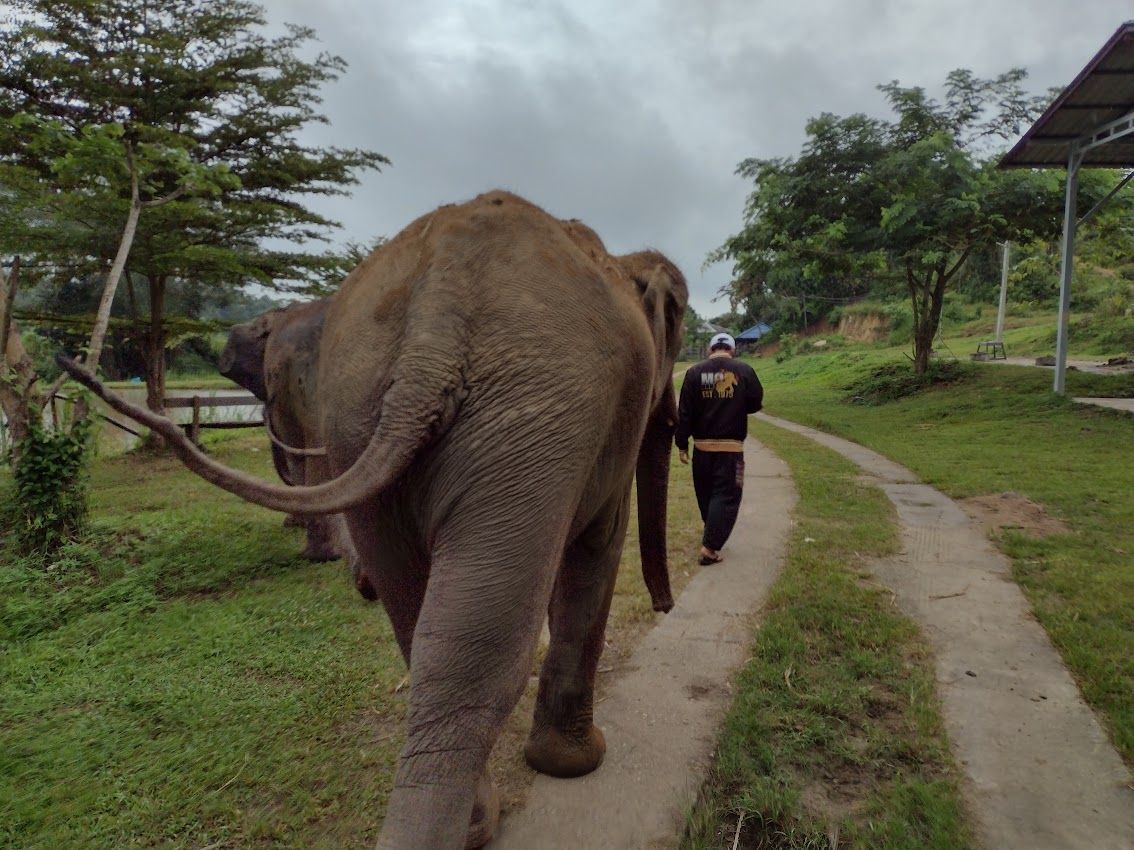
In the second of my series on elephant facilities in Thailand, I find more fun and a better-run outfit
Dear Reader: In case you missed it, here is my first review, which also gives you a backdrop against which to better understand what I'm hoping to achieve: https://www.walkaboutsaga.com/sanctuary-or-scam-i-review-three-elephant-facilities-in-chiang-mai-thailand/. If you are coming here to see elephants, please take the time to educate yourself and do your best to spend money where it does the most good. I hope this series helps you do that. This article is a review of my second day with a very different outfit near Chiang Mai.
All photos in the article are by the author.
Woody was at my hotel very early, with only one other couple in his truck for the day's events. I was crammed into the back. I say crammed because the Danish couple was tall, and the seats were pushed back. I am also tall, so there was nowhere to put my legs. So, I slept. I missed most of the drive to the Elephant Retirement Park (ERP), which like most of these outfits is about an hour or so out of Chiang Mai.
You can read about ERP here:

While I applaud their involvement with the Elephant Sanctuary Asia Foundation (ESAF), I didn't see any indication that they submitted to formal audits as outlined by the New York Times article listed in my first piece. Had they done this and passed, that would have been very prominently displayed. So while I applaud the ESAF affiliation, I still think these places have a long way to go.
Because, if ERP is only for retired elephants, why are some being born there? I am sure there's a good answer to that, but the question does come up. I realize that if you're going to have males and females, mating happens, but they emphasize the retired part a lot.
That said, my day was absolutely wonderful. I got what I signed up for, and was pleased by what I was able to observe as well as what I was allowed to do. Many of the issues that I saw with Mr. Lucky's outfit were not repeated here.
Upon arrival, we were given clothing which would get seriously dirty. My bathing suit, unbeknownst to me, would end up being little more than a holding area for sand and mud, but I'm ahead of myself.
Manny was my guide for the day. He proved himself up to the task, given that on a usual October day there would be 30-40 people competing for his attention. I got him all to myself, and he took scads of photos, for which I was most grateful.
Right away, two elephants were below us begging for bananas. My fellow travelers had signed up for the half day, I had bought the whole day. And was richer for it, so stay with me.
As with the first outfit, there were explanatory posters about the differences between Asian and African elephants. We were not forced to sit through an arbitrary lecture. There were also some endorsements from organizations dedicated to elephant care and safety. Unlike Mr. Lucky's place, ERP proudly listed their affliations, and they had only seven elephants. Mahouts lived on site and as a result, to the best of my knowledge, that meant that their charges had round-the-clock care and contact with their mahouts.
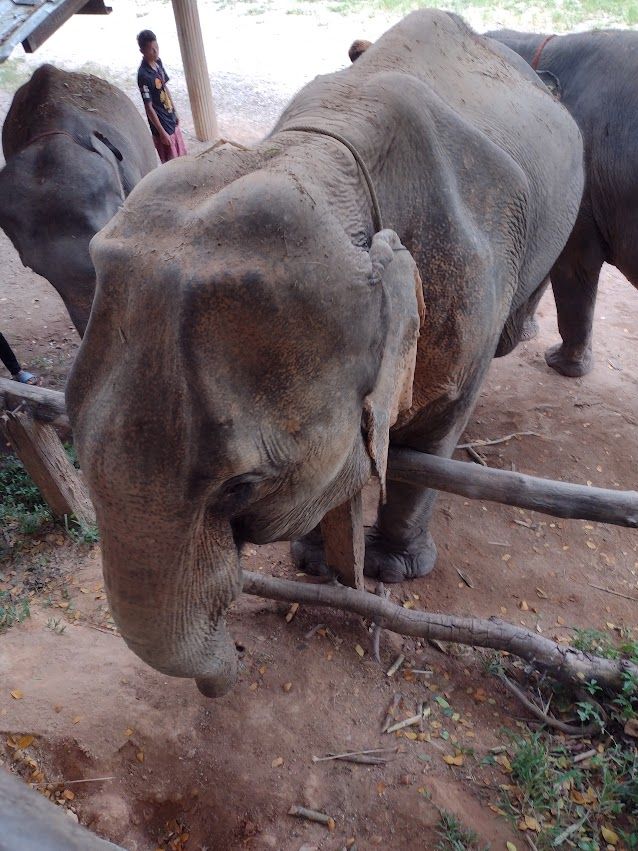
Allowing us to feed the animals slightly above and behind strong beams allows the guides to watch how we interact with them. If you're fearful, animals know it. Elephants are very sensitive and they also have an incredible sense of smell. If they smell dog, or something they don't like on you, they can be quite skittish. Good guides keep an eye out for trouble, just as they also watch to see if you are at ease with very large creatures.
After a fair bit of feeding, which entailed bringing out endless loads of bananas, we watched Lanna, the youngest, play energetically with a tire. Because she can hurl it some distance, you're wise to mind where the tire is at any point or risk getting beaned on the bonnet.
The ERP has two ponds, both of which are getting constant fresh water piped in. The mahouts and we walked the elephants to the first pond where the elephants got thoroughly wet, as did we, then climbed out and into their sand pit.
ERP likes to brag about how they have both sand and mud pits. They aren't for entertainment. Elephant skin needs mud and sand and water, for this not only protects their skin from the sun but also from insects. So the sand is particularly helpful after a bath, which we were only too happy to provide.
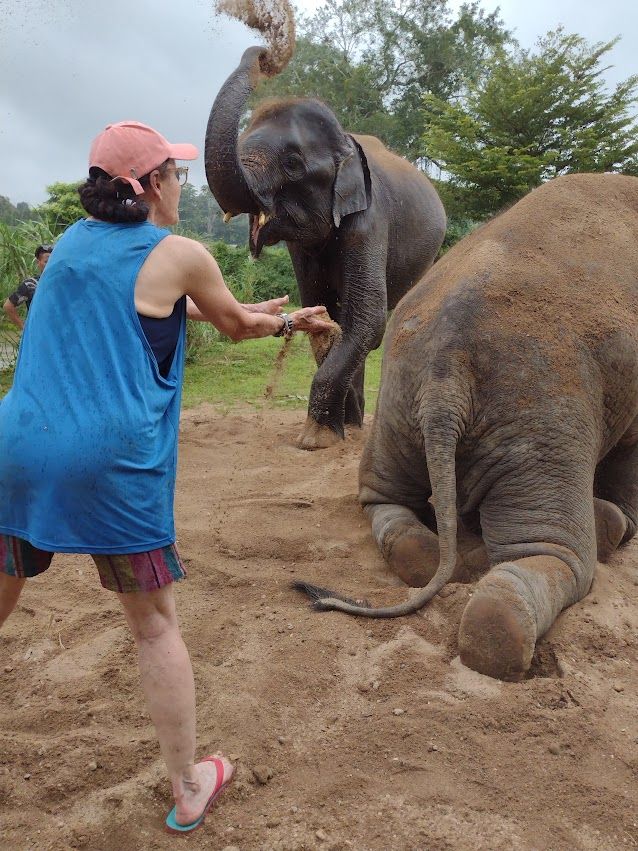
Last year during a trip to Tanzania's Mkomazi National Park, my guide and I spotted a herd of four bachelor elephants heading to their water source. They sprayed and washed, then rolled, then walked to a very similar pit where they threw sand all over themselves. The largest of the four positioned himself over a large boulder and rubbed his belly in the same way that Lanna, the young elephant, was using her tire.
In other words, ERP replicates some of what the elephants seek out in the wild, while allowing guests to participate.
After the sand bath, four of the elephants headed to the mud pit. What I didn't know at the time was that certain parts of the pit acted like quicksand. While I didn't get sucked under, I did an excellent job of getting myself solidly stuck after spending about twenty minutes spreading gooey, cool mud on our elephants.
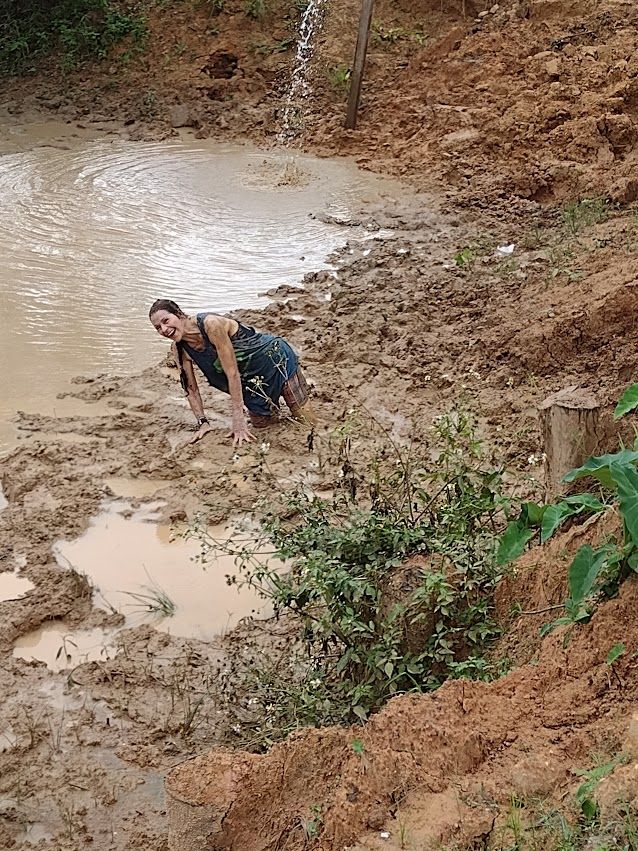
From here, we washed off and had lunch. To their credit. ERP has invested in decent showers, lots of them, not only for their staff but adequate facilities for guests. As compared to Mr. Lucky's shambles of plumbing, here there were plenty of towels, soap, hot water and shampoo. These were very necessary given the thick layers of mud which both the mahouts and the elephants had managed to slap onto me, in my hair and loaded into the seat of my bathing suit.
To be fair, I got into multiple mud and water fights with the mahouts; it's my nature, and it's a lot more fun than standing around watching other people rub mud on the ellies. After all, I showed up to engage, not watch.
Of the people I saw show up that day, most tended to avoid contact, being very hesitant if not avoiding engagement at all. That type of visitor is likely better suited to watch from a distance rather than come to a full-on contact place like ERP, but that's strictly my opinion, and that doesn't make me right. If they came away with a better appreciation for what these animals need and the absolute imperative to protect their shrinking forests, then it was worth it.
The Danish couple had lunch and left. I was left to my own devices by Manny for about an hour, wherein I visited three of the elephants in their stalls. There is a saying here, "no food no friend," and nowhere is it truer than with creatures who spend between 16-18 hours a day eating.
Elephant digestive systems do a very poor job of digesting, which does several things. First: it means that their poop is full of fiber and nutrients that scads of other animals, birds, insects and beetles depend upon. It's just one reason why elephants are such a keystone species. While this article addresses African elephants, it explains the idea:

Second, they are forever eating, which makes their care work- and money- intensive.
To that then. Manny came back and loaded me along with two other people into their pickup truck. We sped off on the winding road through emerald green rice paddy country towards the banana farm, four acres of banana trees. The clouds had gathered overhead and a soft, cool rain fell steadily while we drove to the banana farm.
To give you an idea of just how much elephants eat, those four acres provide enough food- tree and fruit alike- for only two weeks for seven elephants.
Today was tree-cutting time, for most of the bananas had already been harvested. I was given a machete, a quick demonstration, and three of us went to work cutting down the older trees near the ground.
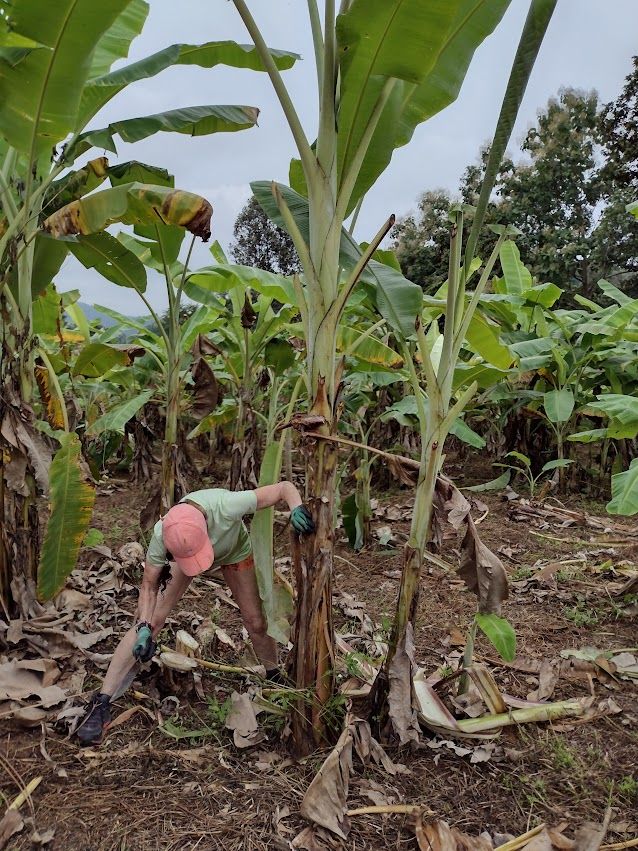
It's fast work. On the first cut, moisture weeps out of the wound. The white flesh inside is prized by the animals (not as much as the fruit, but whatever), so we sliced multiple trees until the back of the truck was loaded.
These trees regenerate very quickly. In just a few months, those we had cut would be sprouting anew, and shortly thereafter producing more fruit.
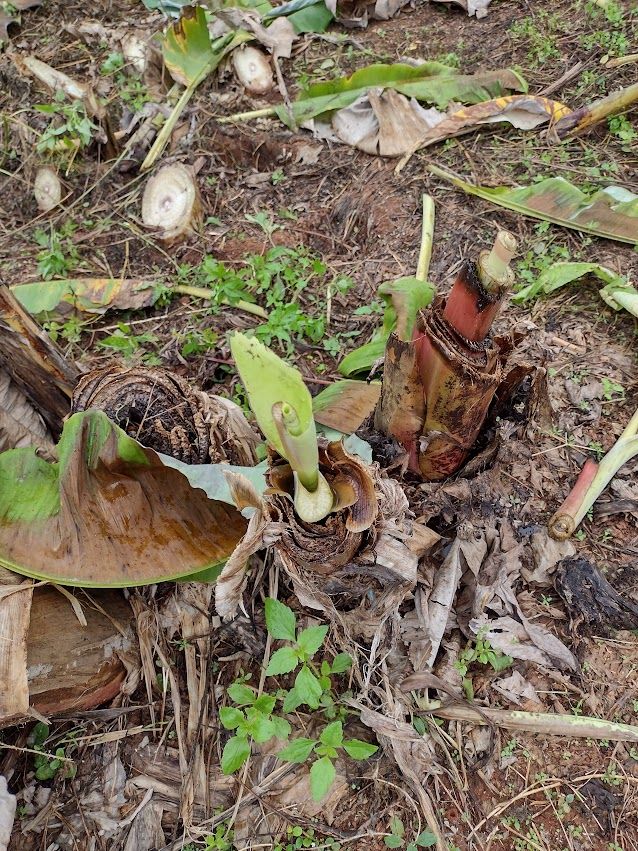
While you most certainly don't have to do this, I like physical labor. I particularly like labor which serves animals, having grown up on a farm. Tossing hay, lifting bags of sweet feed and other basic daily chores are pleasurable for me, so the hour or so we spent on the banana farm doing hard, sweaty work was right up my alley.
The trees come down fast, and it didn't take long before we had enough for a quick mid-afternoon elephant snack.
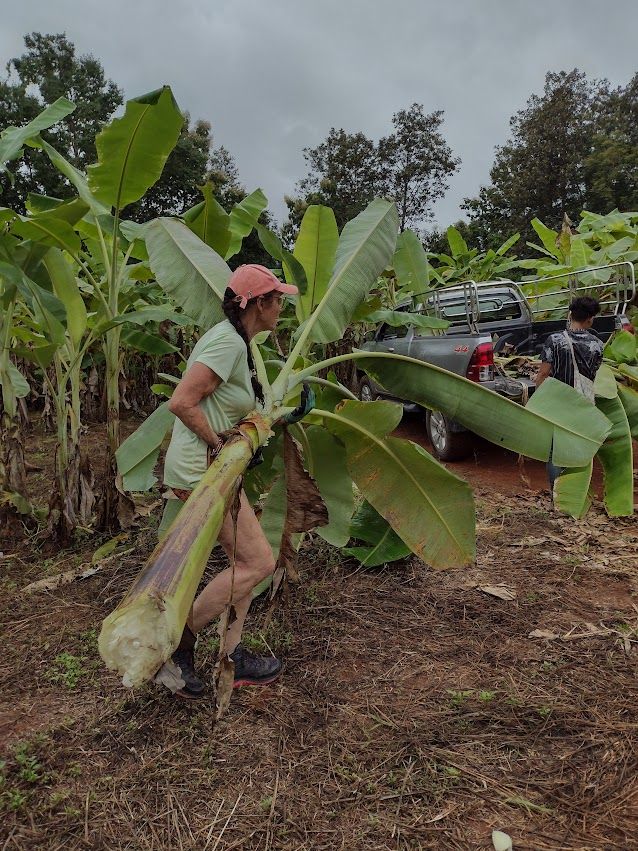
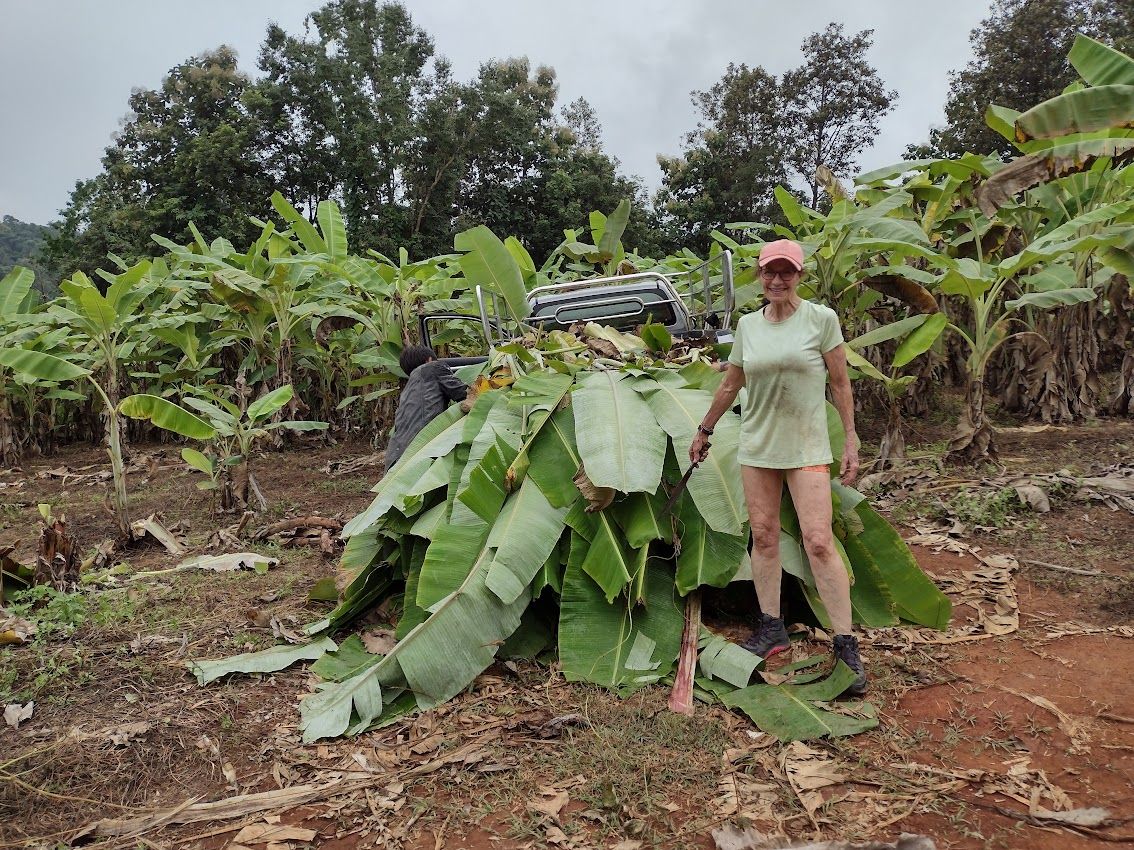
Then a windy, quick trip back through more soft rain (very welcome soft rain for my part), we unloaded right next to the stalls. The elephants were eager to get their trunks on their prizes, and so we got everything unloaded and cut a few trees up for our hungry charges.
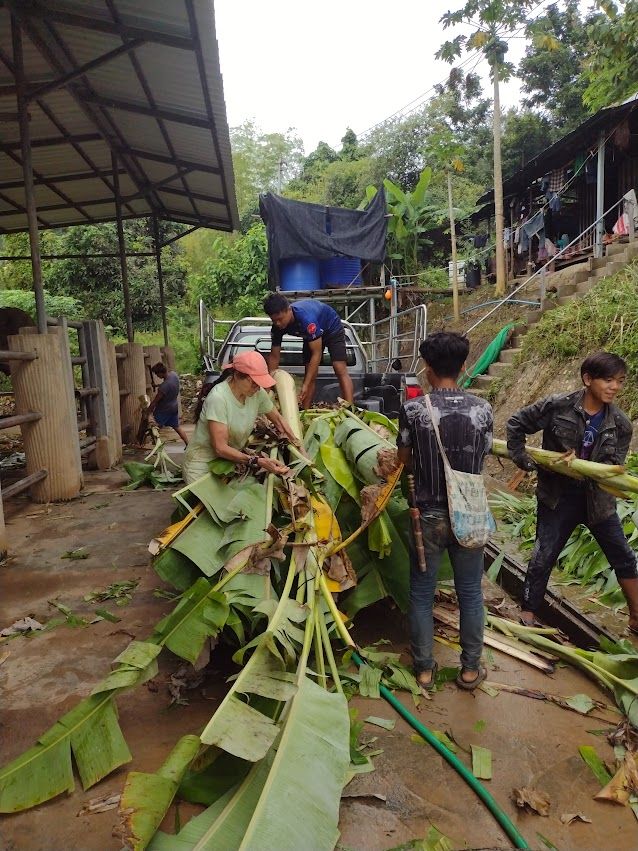
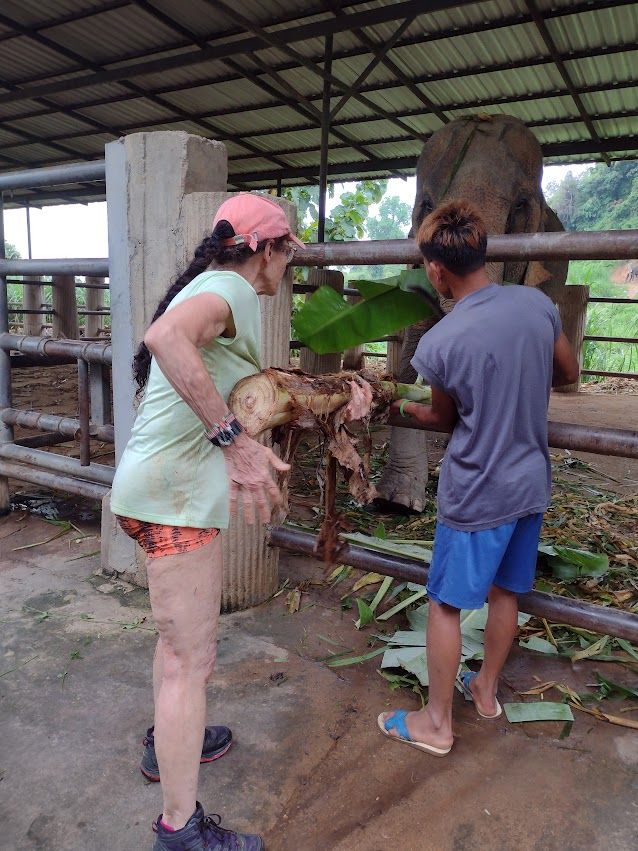
Part of the value of this kind of activity is that you begin to appreciate not only the time investment but the pure workload that is involved with elephant care. On average, the research I found states that it takes close to $40 a day to feed one elephant. A Thai family of four can eat quite well on less than half that. The costs are prohibitive.
Turning the elephants out into the wild isn't an option, either. Not only do they not have the skills to forage (taught by the herd and the matriarchs), but they are dependent upon their humans for care and feeding and the wilds aren't wild enough or expansive enough to protect from poachers and give them adequate forage. When Covid hit, many of the elephants used in the tourist trade were threatened with starvation, given the cost and the complexity of their care.
Because I had the whole day, Manny pointed me back to the pools where another group had arrived to play. By this time, Manny had gained some measure of my comfort being around the animals and how much I wanted the interaction. The guides, to be fair, are not above dropping loud hints about how poorly-paid everyone is, which is likely true. There are tip boxes on the central tables if you're happy, and I was.
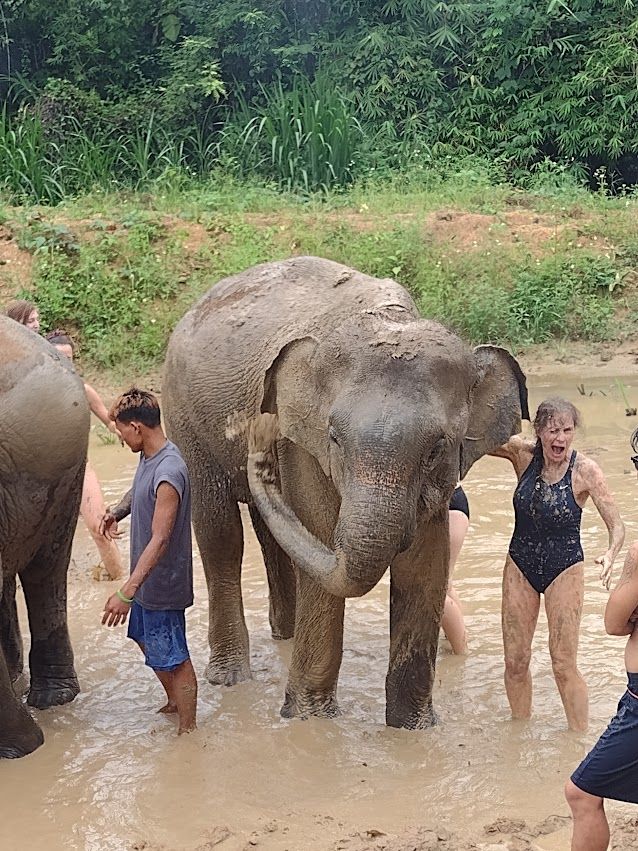
Even if I did get nailed right in eyeball.
The assumption that white=rich is as prevalent here as everywhere else I travel, so soliciting for money is common. People are looking for sponsors and big donations, neither of which I can offer. But there are folks who do, and they get certificates to take home for their generosity. I left a hefty tip, and my hope is that a positive review will also get them some business.
In all fairness, what happens behind the scenes, whether these great animals are as loved as they seemed to be while tourist eyeballs are on them, I have no idea. I heard many stories about how these creatures are mistreated the moment the tourists leave, but those are general comments not leveled specifically at ERP or any one place.
I cannot say anything about ERP other than to watch Manny curl up against Lanna's chest in the water with her truck wrapped around him doesn't speak to me of poor treatment. Manny gave up a career as a software developer to do this; this looks like a love affair to me.
And that is how I will leave it.
The elephants looked happy and well fed. I was happy. I wrote them a fine review, driven in part by the particularly negative experiences the day prior, but felt they had earned it. After all, I had my day in the mud.
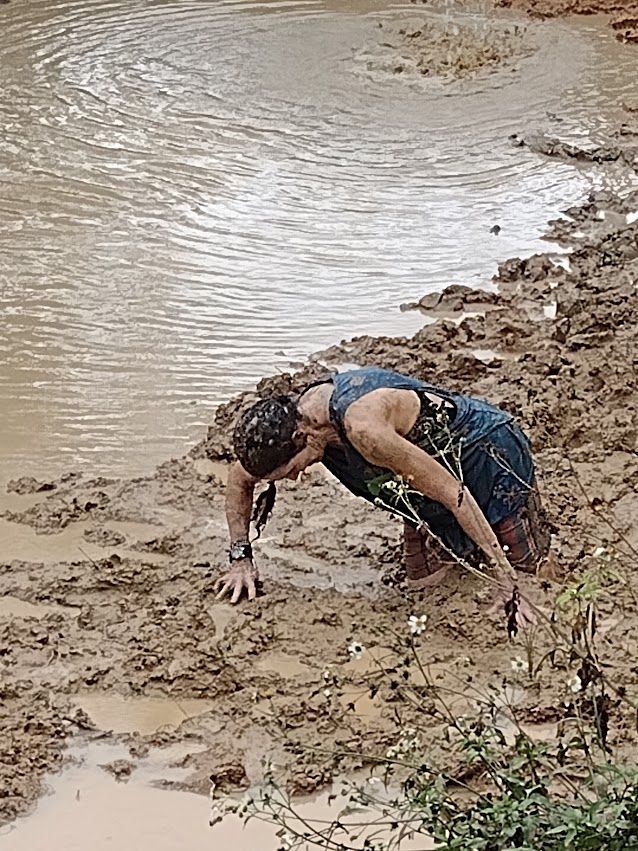
Dear Walkabout Saga Reader:
If my work appeals to you, may I kindly invite you to consider joining those Patreon supporters whose generosity keeps the gas in my tank as it were. Those supporters get to dictate my content calendar, we engage as a community, and this website and its content acts in service to our collective best selves.
You can explore that option here.
However you decide to partake of my writing, thank you.


Comments powered by Talkyard.